Crossing world's largest lake in a CX-530 | 03 | 2018
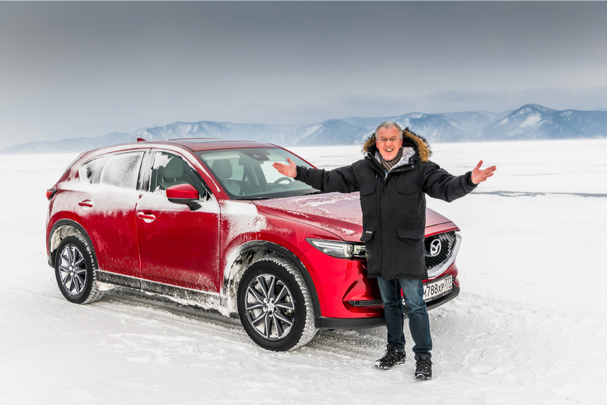
LIKE ME YOU’LL NO DOUBT have become accustomed to the hashtag #beastfromtheeast over the last few weeks as the icy cold weather from Siberia travelled west to blast Britain. But while UK drivers, fearful of venturing out, hunkered down at home reacting to ‘Red Warnings’ communicated by ever-more serious-looking TV weather presenters, I found myself heading east to … yup, Siberia. (Related: Three days, 2000kms and a Mazda3 in Eastern Siberia)
And eastern Siberia at that, just a hundred miles or so north of the border with Mongolia. It’s so far east that the next time zone takes in Japan.
To rather state the obvious, Russia is — not to put too fine a point on it — massive. After a three-and-a-half hour flight from Heathrow, 1554 miles later we were in Moscow. That was followed by a six-and-half-hour flight to Irkutsk, 2620 miles further east. An eight-hour time difference to home in Dundee. (Related: Mazda2 Azores Epic Drive)
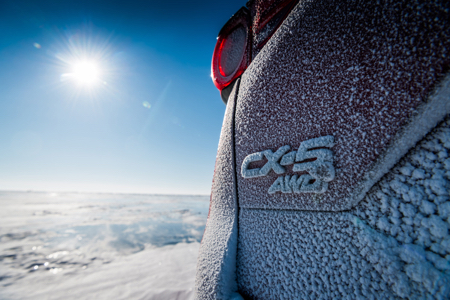
Why travel 4200 miles? To pioneer a new, unchartered crossing of the world’s largest, longest and deepest freshwater lake, Lake Baikail. At 25 million years. it’s also the world’s oldest.
And what was I going to drive? Some six-wheel behemoth capable of crossing the Antarctic? A slow-moving tracked vehicle with would rumble along at a snail’s pace? (Related: Roadtest — Mazda CX-5)
Nope. A Mazda CX-5 All-Wheel Drive family SUV. Madness? Hmmm … the thought did cross my mind. Not so much when the initial invitation arrived, but certainly the night before the crossing as I peered out of the window in the hotel overlooking the lake as the snow continued to fall heavily, driven by a 30mph wind.
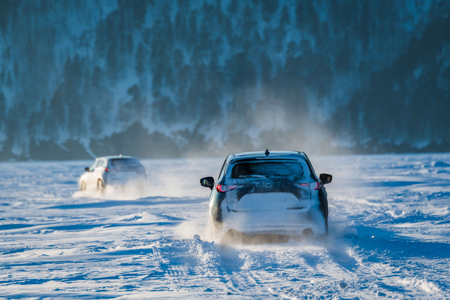
Six hours earlier, the paths round the hotel has been dug clear by heavy machinery for our arrival. Now there as close to a foot of fresh fallen snow. This wasn’t looking good.
Morning dawned. The snow had thankfully stopped, but the biting, icy wind was still determined to whisk the fresh snow into ever-deepening drifts, while at the same time reminding you this was a hard core environment: 7am and minus-22, even before factoring in the windchill.
Driver safety briefing followed breakfast. We would establish a new 62kms route across the frozen lake, leaving Listvyanka — the lake’s ‘most popular tourist destination’ — arriving on the southern shore “in around four hours”.
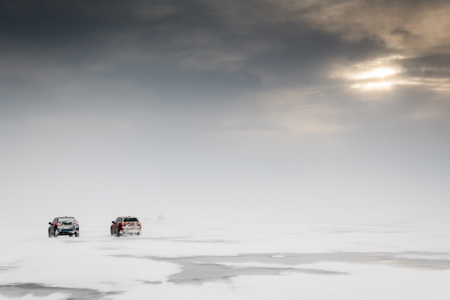
There was a general, silent sniggering across the group: “Four hours, for 62kms? Come on. We’ll never take that long.”
After landing, we’d then have another 240kms to travel east along the Trans-Siberian highway to the nearest main city, Ulan Ude. In total, the drive should take around seven hours.
I’ve driven the excellent latest-gen CX-5 before, first at its launch last summer on a return drive from Inverness to Oldmeldrum, then three-up on a 1200-mile round-trip from Oxford to Aberdeen and back. So I was already well acquainted with the family versatility, super-efficiency and fun driving delivered by the Mazda SUV, which starts at £23,995.
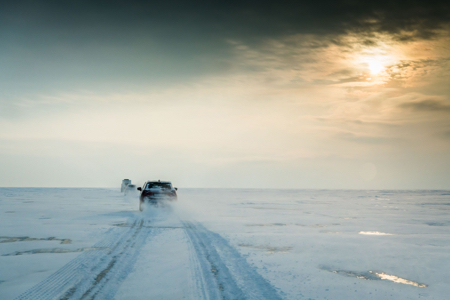
The Russian-registered cars for our cross-lake adventure were standard CX-5s. Each was fitted with the SkyActiv-Drive six-speed auto ‘box, but debuted the new 180bhp 2.5-litre petrol SkyActiv-G engine which will make its first UK appearance in the latest Mazda6 saloon and estate which go on-sale at Scottish dealerships this summer.
And while the cars were fitted with Russian-make studded tyres, the star of the show was intended to be Mazda’s new-generation i-Activ intelligent all-wheel drive system. Little did we realise before we set off just how severe the test would be.
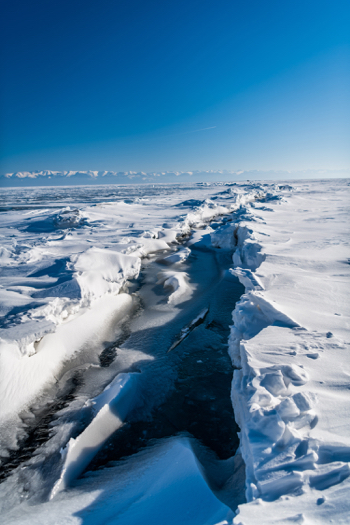
Heated seats and steering wheel on, the first challenge was negotiating the steep ramp out of the hotel. Believe me, without four-wheel traction and studded tyres, I’d still be stuck in the car park.
Half-a-mile down the road, we drove onto the frozen lake. Perhaps time for a bit of perspective.
Siberia is 13.1 million km/sq, with a population of 36 million people. The UK is 209,331km/sq, with a population of 60m. Lake Baikal — which can be seen from space — is 400 miles long, and in places 50 miles wide. It also has a maximum depth of more than one mile: and that’s not including the four-mile depth of silt accumulation below the bottom.
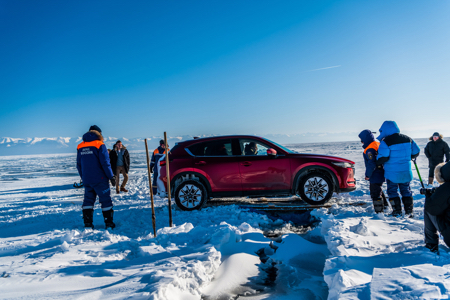
It holds more than 5500 cubic miles of freshwater. That’s equivalent to the whole of the Amazon basin. And it’s still growing. Because the rift is geologically active, the lake widens by two centimetres a year.
For almost five months of the year, Lake Baikal is covered in ice: most commonly to a thickness of between one to one-and-a-half metres. And thankfully, it’s at its thickest in March, having increased in depth by anything from between 50 to 200mm a day.
It was quite surreal to drive past the holiday ferries, which sail the lake in the summer, tied to their moorings while I was on the lake 300 yards from shore.
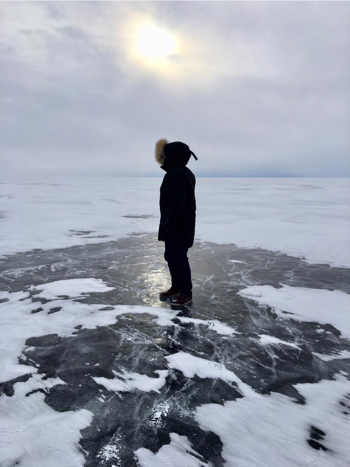
The first half of the crossing went smoothly. Following the giant Russian six-wheel Trekol 39294 — operated by the National Russian Safety agency, Emercom, and which, despite weighting 2.2 tonnes, exerts less pressure on the snow and ice than a person walking — our biggest challenge was the odd deep snowdrift.
However, that was all to change not long after we reached the midpoint of the lake. The ice essentially mirrors the tectonic plates which form the Earth, in so much as they are constantly moving. When they collide, they can create an impassable landscape of giant overlapping slabs and huge, crystal-like blocks up to 12m in height.
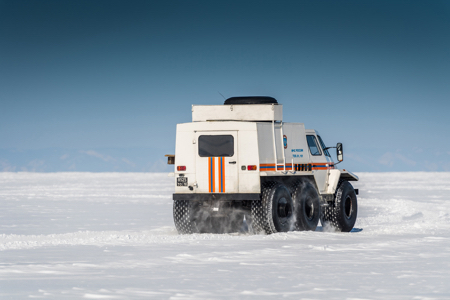
Occasionally, crevices will open in the ice with a sharp, thunderous crack. Anything between 10 and 30kms in length, they can open to a width of three metres.
Not only did we come across one such crevice, but also a number of potentially suspension-shattering ‘rocky’ ice fields. While the Trekol glided its pioneering route across the surface, the CX-5 was left to carefully negotiate the near never-ending path of double breeze block-sized slabs of ice which peered threateningly from within their newly-formed snowdrift.
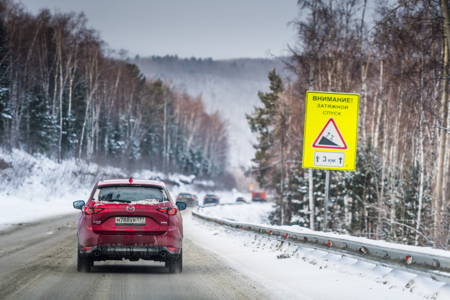
And what do you do when you’re faced by a 30km long, 3m-wide crevice in the middle of a frozen lake. Well, you build a bridge, of course. Well, the Russian crew from Emercom did.
Wielding their power saws, they first filled the gap with newly cut solid chunks of ice; they laid a blue, plastic tarpaulin over them; then laid two tracks of plywood for the cars to drive over. Easy really!
I asked: “Why bother with the blue tarpaulin?”
I was told: “It’s simply to hide the fact that beneath it, the surface is transparent and just watery sludge. Not really what you want to see.”
Right. Ok.
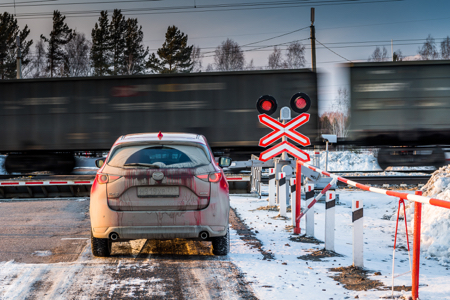
Waiting to be the second CX-5 to cross the ‘bridge,’ my mind flashed back to the Mazda ‘Deed of Participation’ I’d signed before I committed to the trip, and the phrase contained in the section “Assumption of Risks”, which read: “I fully accept … full liability for every such risk … including death”.
So McGill: man or a mouse? Easy-peasy. Slowly towards the temporary structure; ensure the wheels are aligned to the plywood, and drive across, not too fast and not too slow. My life trusted to a Mazda CX-5 AWD. Job done.
The second half of the crossing was more of the same, certainly in terms of deep snow, dangerously damaging ice blocks, and slow, slow, stop-start progress.
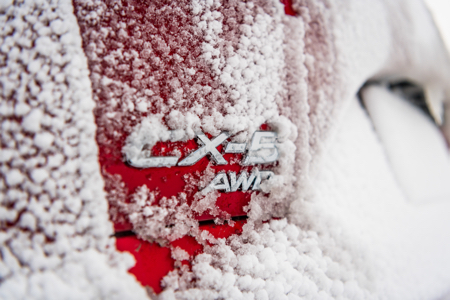
But finally, seven-and-a-half hours after rolling on to the ice, it was mission accomplished. The CX-5 AWD had delivered a world first route crossing of Lake Baikal.
Now all that remained was the final 240kms to Ulan Ude. Fuelled by a mini-Snickers bar, a Nutrigrain bar and a bag of cheese & onion crisps, bought from a not-so-inviting Russian filling station after we elected not to stop for a late lunch, but rather bid to beat darkness falling on one of Russia’s most dangerous roads, we further east.
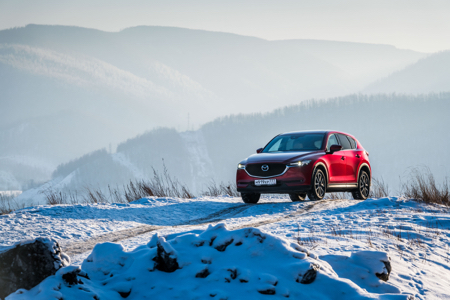
Almost 13 hours after leaving the hotel, we arrived at Ulan Ude, in the shadow of the giant 7.7-metre high, 42-ton bronze of Lenin’s head.
Despite everything that was thrown at it, Mazda CX-5 AWD not only survived, but conquered the severest tests the real Beast from the East could generate on frozen home soil .. well, freshwater.
And if it can do that, rest assured it’ll cope with whatever you throw at it when you drive it out of your nearest Mazda UK showroom.
Related: Prices revealed for new Mazda6
Keep up-to-date with all the latest news by following us on twitter.com/Scotcars
Jim McGill
Photographs: Dave Smith